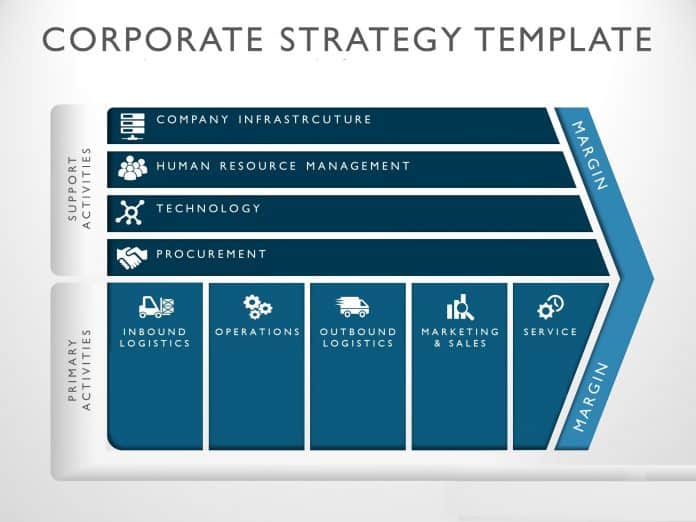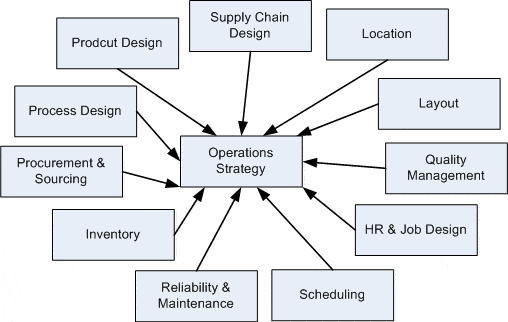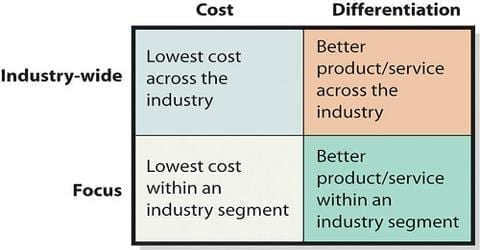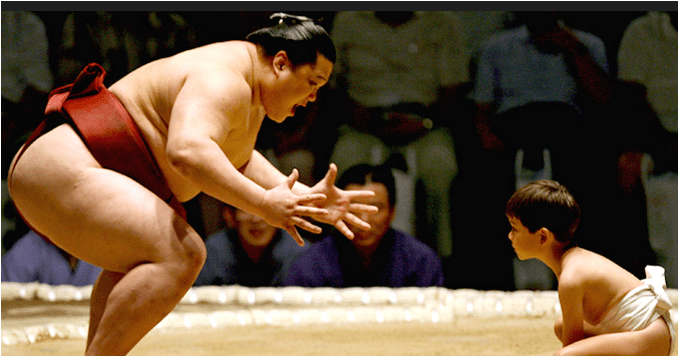According to a mentor of mine, Professor Michael Porter, business strategy simply put, is – “Do what everyone else is doing (but spend less money doing it), or do something no one else can do.”
While either approach can be successful, the two are for him not economically (or, I think, morally) equivalent. Competing by doing what everyone else is doing means, he says, competing on price (that is, learning to be more efficient than your rivals). But that just shrinks the pie as, in the rush to the bottom, profitability declines for the entire industry.

Alternatively, you could expand the pie by staking out some sustainable position based on a unique advantage you create with a clever, preferably complicated and interdependent set of activities (which some thinkers also call a value chain or a business model). – Source
Suggested Reading: Understanding Entrepreneurs
There are at least three basic kinds of strategy that business owners and entrepreneurs in general, must concern themselves with and master in the world of business:
- Corporate strategy – the business you should be in as a company
- Competitive strategy – Your tactics and positioning to beat the competition
- Operational Strategy – Your operational methods to deliver the tactics
The purpose of this article is to provide some insights into how small business owners can better compete in the Nigerians entrepreneurial space. There is a list of academic research conducted on the survival of businesses in Nigeria here.
As an entrepreneur, you are basically up against sharks, most of whom are bigger and more experienced than you. But like it is in the ocean, the fact that the threats of the existence of bigger fish are not enough to prevent other fish from being born and competing with the bigger fish for the same source of available food.
If you follow me on this journey, I will attempt to break down what it takes to muscle things out with other corporate players in the SME ecosystem of Nigeria.
Contents
Understanding Corporate Strategy
To better understand what corporate strategy is, you should place your focus on a typical SWOT analysis typically conducted by businesses. The aim of the analysis always is to determine a company’s best positioning strategy viz strengths and weaknesses.
The primary concern of business owners while formulating their corporate strategy is with how they would as a company, approach the marketplace – where to play and how to win.
Have you ever heard about Judo, or seen a Judo fight session? I love Judo, and I have spent a considerable amount of time seeing Judokas do their thing.
One major lesson I got from Judo is that size does not matter. Judo strategy is based on three elements—rapid movement, flexibility, and leverage—each of which translates into a competitive principle.
With the rise of Internet-based competition, David and Goliath battles between companies are becoming more and more common. Fast, flexible entrants are taking on dominant incumbents, not only in high-tech sectors such as software and networking equipment but also in traditionally low-tech industries like retail – HBR
There is no denying the fact that big companies, with their deeper pockets, and unlimited access to resources as well as A-list workforce can do big things that smaller companies can only dream of as a wild stretch of their imaginations.
As a small company, though, the path to taking on these more prominent players can feel like going against a giant in battle. No matter how far you stretch, achieving the economies of scale that the bigger boys have as a result of their enormous purchasing power may seem beyond reach.
That is what makes entrepreneurship so exciting. To be a successful entrepreneur, you must have guts, hubris, and grit. You must be nimble and find innovative ways to do more with less.
To put you in the frame of mind for the suggestions here, let me remind you of one of the best-known cases of a startup taking on a giant in Nigeria.
Cowbell Milk vs Peak Milk
| Peak Milk Profile | Cowbell Profile |
| Premium quality brand | New Market Entrant |
| High Price | Cheap pricing |
| Owners were cash-heavy | Perception of lower quality as compared to peak milk due to significant lower pricing |
| Wide market coverage | No market presence |
| Sold across all major stores and supermarkets in the country | Zero sales or logistics network |
1Corporate Strategy – The Way Of Cowbell

Cowbell started by carrying out very thorough market research to understand why Nigerians drank milk. First, the background. The year was 1993, an election year. Cowbell’s study showed that Nigerians who had experienced temporary wealth with the oil boom were now feeling the pinch as they could no longer afford to buy Peak Milk, which was very expensive. With the introduction of Cowbell, a large population of poor Nigerians could now afford to buy milk. Cowbell understood that for it to stand a chance to displace Peak, it had to be ingenious; it must disrupt the market.
So, the first thing they did was to take a position, a seemingly smaller position; they positioned themselves as a brand for the underprivileged. That somehow massaged the ego of the owners of Peak milk, and it gave them the needed cloak to wield the sword unseen.
2 Operational Strategy – The Way Of Cowbell

The next challenge was in distribution. As a startup with lean pockets, they could not utilize major distributors and supermarkets who often bought on credit. So, how would they distribute a product like this across a broad market like Nigeria?
Unlike Peak Milk, they did not have access to a deep pocket; they had no brand, nor was there a readymade logistics network that they were deploying. Cowbell came up with an alternative distribution network that boycotted supermarkets and major distributors – focusing on the direct kiosk to kiosk sales. This meant their sales were in cash, and they could push inventory at a fraction of the cost of their competitor. A masterpiece of a solution!
3Competitive strategy – Cowbell’s Final Stroke tactics and positioning to beat the competition

Another major innovation by Cowbell was to exploit a core weakness of Peak Milk – it came in tins that forced buyers to consume everything at one go because the poor power situation in the country made it tough to refrigerate open tins. Cowbell’s product was powdered milk that could be opened and preserved without refrigeration.
The final piece was in the pricing. Pricing was the masterstroke of their whole market penetration strategy! Cowbell sold at 50kobo per sachet! Say what! Yes, you got that right. There was no way Peak Milk could water down their premium brand by competing with Cowbell at a 50 kobo price level.
Little by little, Cowbell grew their brand and by the time Peak Milk finally woke up from her lethargic and arrogant slumber, the damage was already done and Cowbell had gained even middle-class acceptance and was a blue-chip brand status in Nigeria.
Strategy Lessons Learned
Don’t be greedy – go for a piece of the pie
When you are starting out as an unknown brand in a market that is filled with major established competitors, it is crucial that you niche down. Trying to take up more than you can chew can leave you with severe existentialist threats.
Be deliberate about your research and narrow down on a niche that can give you a credible entry point into the market. What kind of service can you provide that will be exceptional enough to stand you out from the shadows of the giants that you are confronting?
For example, when Facebook was coming into the social media space, they did not confront MySpace head-on. Instead, they niched as a social media platform for students.
As they gained acceptance with the student crowd, it became more comfortable for them to shift the boundaries of the segments that they served using the market recognition that they had already gathered.
Wrap up: If you have to compete with an A-list brand in well-established markets, it is important that you find a way to disrupt the industry, differentiate your product or service and meet the needs of your market so well that they become brand evangelists for your products.
It is suicidal to go head-on with a competitor with a pocket that can swallow you without leaving a dent. Come in from the flanks and serve markets that your competitor is currently under-serving and make them your core market.
Does this guarantee that you will win? Hardly.
However, with detailed and creative thinking, grit, and innovation, you will be able to use the small size of your startup to your advantage.
Niche Down on Your Product and Market Segment
The main reason why you are in business is to provide solutions to problems that your customers are facing. However, of what good is a solution if nobody knows that it exists? If you have found an angle, there is every reason to make sure everyone knows about that competitive angle you have and associates it with you.
Selling is effectively about storytelling. It would be best if you found that angle that stands you out from others, which can be the reason you decided to get into your business, the value embedded in your products and services and what stands you out from the rest.
Having decided on your angle, weave it into a compelling story that can be shared across your marketing co-laterals.



















